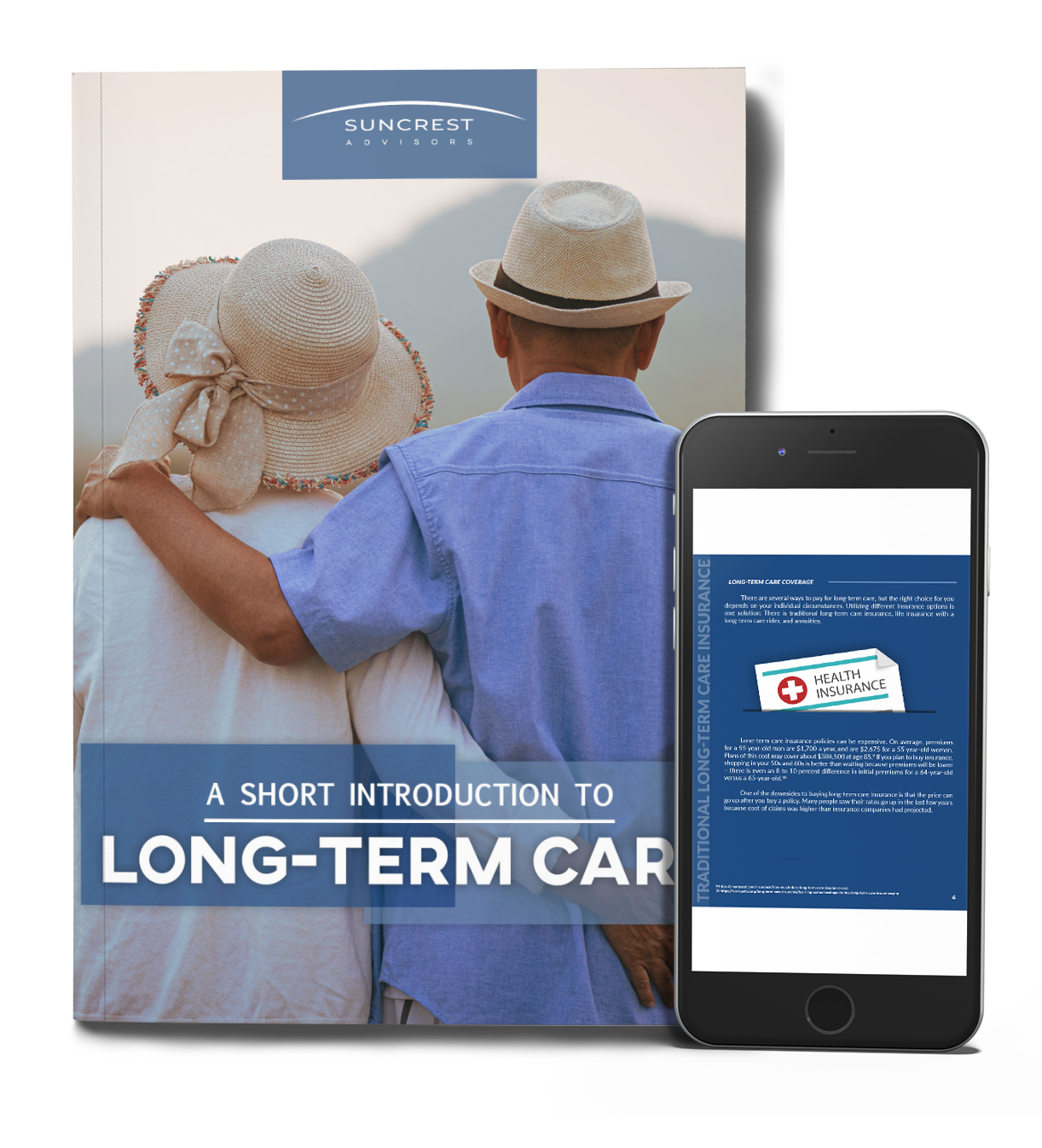Your Vision. Your Values. Our Guidance.
SUNCREST ADVISORS

Suncrest Advisors is made up of several generations of financial services professionals from various fields, all of whom have one thing in mind – to best serve our clients’ financial planning needs through collaborative effort. Today, our fiduciary team includes CERTIFIED FINANCIAL PLANNER™ Practitioners, Chartered Financial Analysts, investment advisors, portfolio research analysts, insurance professionals, qualified plan experts (including a dedicated ESOP team), employee benefits specialists, and other professionals. Clients think of us as their financial quarterback, leading and coordinating the many moving parts of their financial lives so they can have complete confidence in their future.
We care deeply about our clients’ goals and tailor our comprehensive services to meet them exactly where they are in life. Our clients understand that there are many potential pitfalls to avoid in the financial world, and they value our guidance, experience and expertise when making life’s most important decisions. With our team of professionals always on their side, our clients feel confident knowing that their financial future is secure.
WHO WE SERVE
We specialize in working closely with business owners, executives and professionals to help them accomplish their goals – from the simple to the complex. We also take great pride in serving individuals, pre-retirees, retirees and families in efficiently managing their wealth. Our clients have worked hard throughout their careers to get where they are today. Our team at Suncrest Advisors is ready to help elevate them to the next level through our comprehensive and efficient planning process. For both individuals and businesses, we address a wide range of client financial planning concerns and help them navigate life efficiently.
Planning For Individuals and Families
At Suncrest Advisors, our fiduciary team of financial planners and investment advisors will empower you at every step of the way to make fully informed decisions about your financial future.
Our mission is to help you accomplish your vision and goals in the most efficient manner possible. Our proprietary process evaluates six key areas to turbocharge your financial efficiency. We’ll study your current cash flow and help you direct money into the most optimal places, assist you in managing life’s risks, ensure you’re getting maximum tax advantages, and show you how much to save – and exactly where to save it. We’ll help you by actively managing an incredible investment portfolio that is not just well-diversified but has in it best-of-breed, strategically unique investments that, when blended, optimize your risk-adjusted returns, eliminate all unnecessary fees and expenses, and lower the tax impact on your household’s returns. Managing wealth in this way leads to providing you with ample and sustainable retirement income to fund your lifestyle, with room to spare for the legacy you may want to leave behind to your loved ones or favorite charities.

Income Planning
We’ll show you how much to save and exactly where to save it to create the strongest and most sustainable retirement income for your future.
Investment Management
In building and actively managing our clients’ wealth, we parlay our firm’s stellar research and analysis into having solid long-term conviction around exactly which stocks, bonds, and other assets to own and why. Along the way, we show all our clients how to avoid all unnecessary fees and expenses.
Tax Reduction Strategies
When applied appropriately as part of your comprehensive financial planning, there are income tax deductions and other tax advantages available that can help you fund your goals while also substantially offsetting your ongoing tax burden. While many tax professionals report only “what happened” by filing your returns after looking in the rear-view mirror, we see success in this planning area differently. Instead, we love collaborating with your tax professionals, educating them about strategic planning ideas for you that can result in lower taxes and better outcomes.
Long-Term Care Planning
A large risk to clients’ portfolios during the latter part of retirement can come in the form of chronic health and/or custodial care expenses that aren’t covered by Medicare. We make sure to stress-test our clients’ financial plans so they can make informed decisions on how to plan for these potentially substantial expenses.
Legacy Planning
Our careful legacy planning can help you pass on much more of your hard-earned wealth to your family or your favorite charities instead of the government.
Business Owners
We work with business owners to create a financially strong company. We believe the future well-being of your company starts with addressing the well-being of the company’s most valuable assets – your employees. We don’t stop there; we will also review with you how it may be possible to strategically reduce income taxes, better protect assets, improve the efficiency and employee experience regarding the company’s retirement plan and other employee benefits, retain your best talent, and, of crucial importance – drive an efficient exit plan for you when you’re ready.

Income Tax Reduction
Regardless of what type of business you own, new tax laws could make a significant difference in your current and future financial situation. We can walk you through the pertinent information for your circumstances to help you maximize your bottom line while minimizing taxes.
Asset Protection
We’ll advise on how to strengthen your position against any potential creditors or litigants, how to retain your top talent that is driving company revenue, and how to increase the yield safely and effectively on your company’s operating capital so you can continue to grow.
Retirement Plans
Our team of experienced professionals will help you by either creating or modifying your company’s retirement plan design to improve your employees’ overall experience. We ensure that the design of your retirement plan fits your company’s goals and serves as both a retention tool and an attractor of new talent.
Employee Benefits
Our specialists will help you provide the best benefits package available for your employees and show you ways to potentially lessen your expenses while putting those dollars back on your bottom line.
Business Exit Planning
Our exit planning expertise and network of professional partners can help you determine the best course of action regarding your eventual exit. This will allow you to maximize value, minimize taxes, and meet your other objectives.
Retirement Resources
Download Our Guide
Several changes to the healthcare system are coming in 2024.
Some states are considering a new tax on individuals that do not have long-term care savings or coverage plans.
Long-Term Care programs may be introduced to cover certain benefits over certain periods.
How will this transform your financial situation if your state adopts these changes? Contact a Suncrest financial professional to find out at (801) 676-0146.
A Short Introduction To Long-Term Care

Americans today are living older than in the past: In 1950, life expectancy for Americans was 68 years old, and in 2023 it’s roughly 80.1 Of course, many people live to be older than that. In fact, the Census Bureau estimates that by 2050, Americans 90 and older will make up 10% of the population.2 A longer, healthier life is certainly a blessing, but it comes with extra costs that are important to consider when creating a retirement plan.




